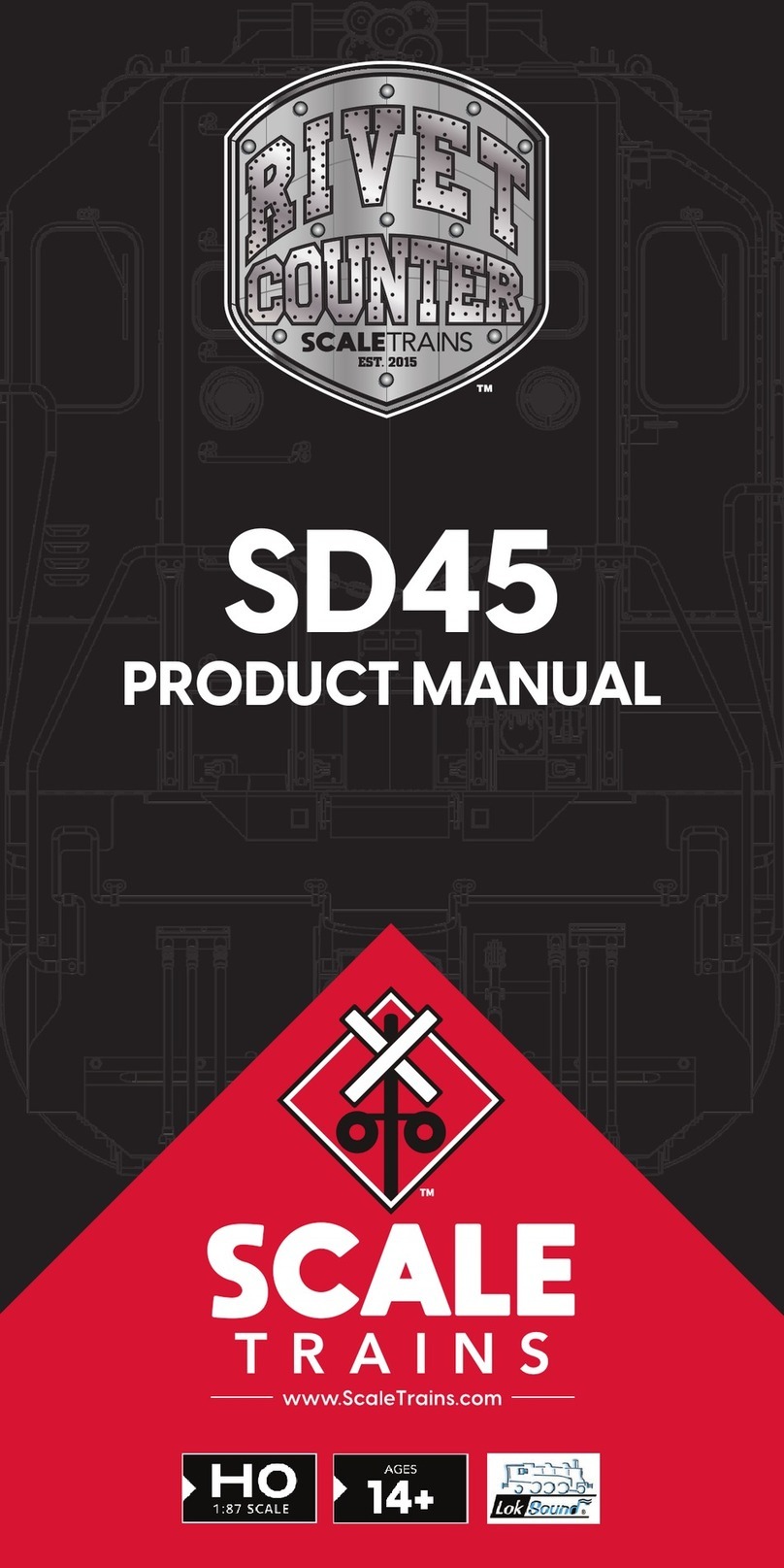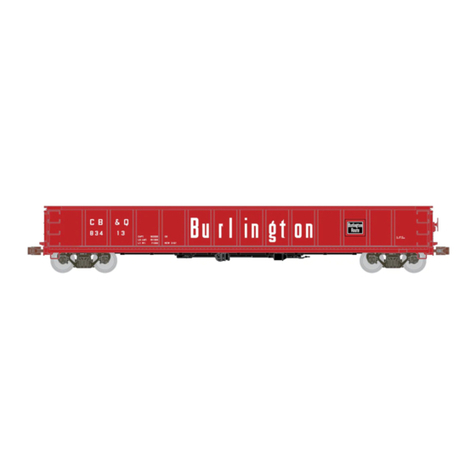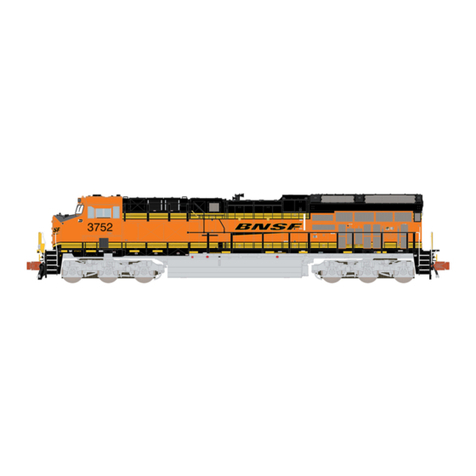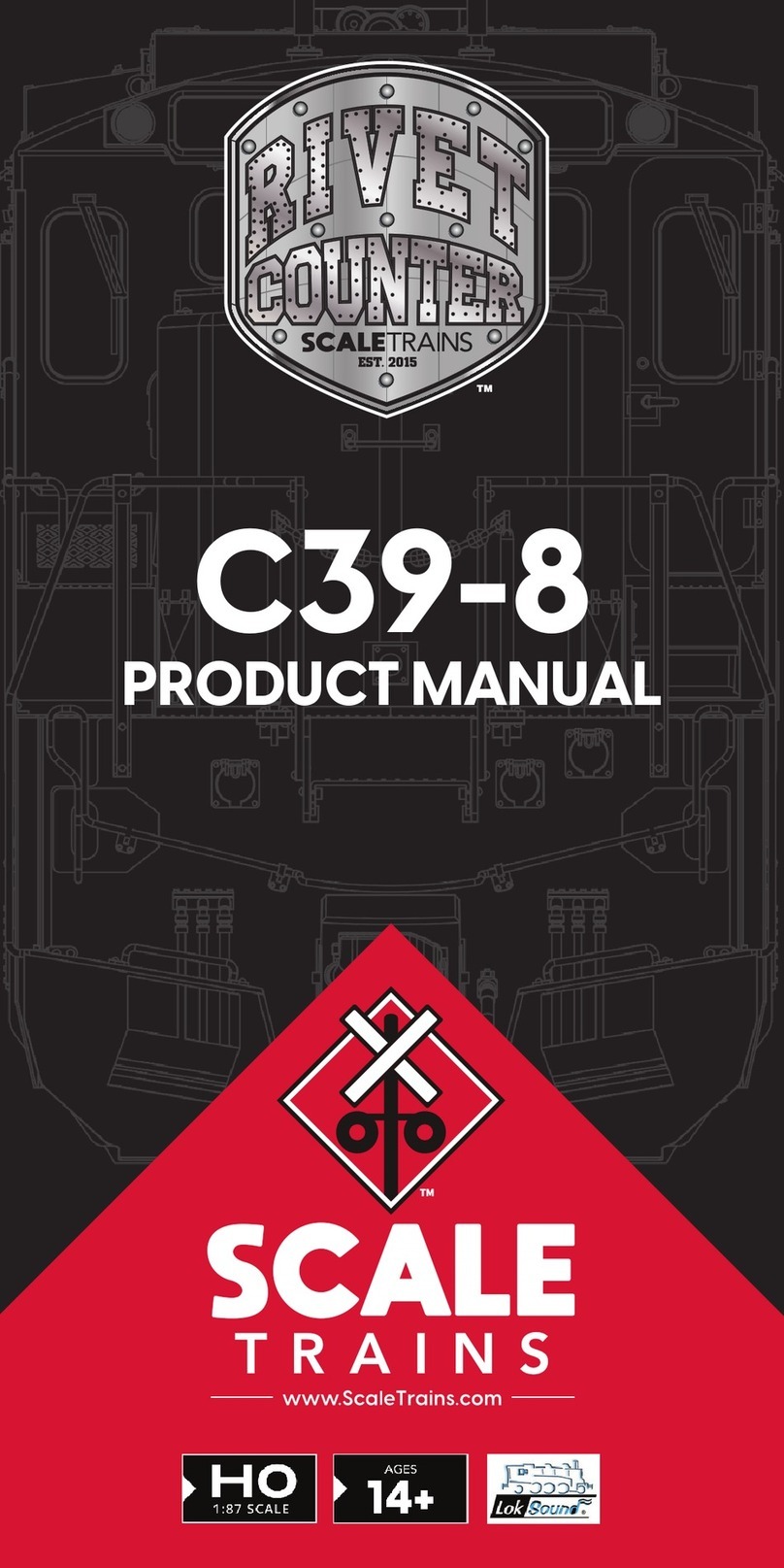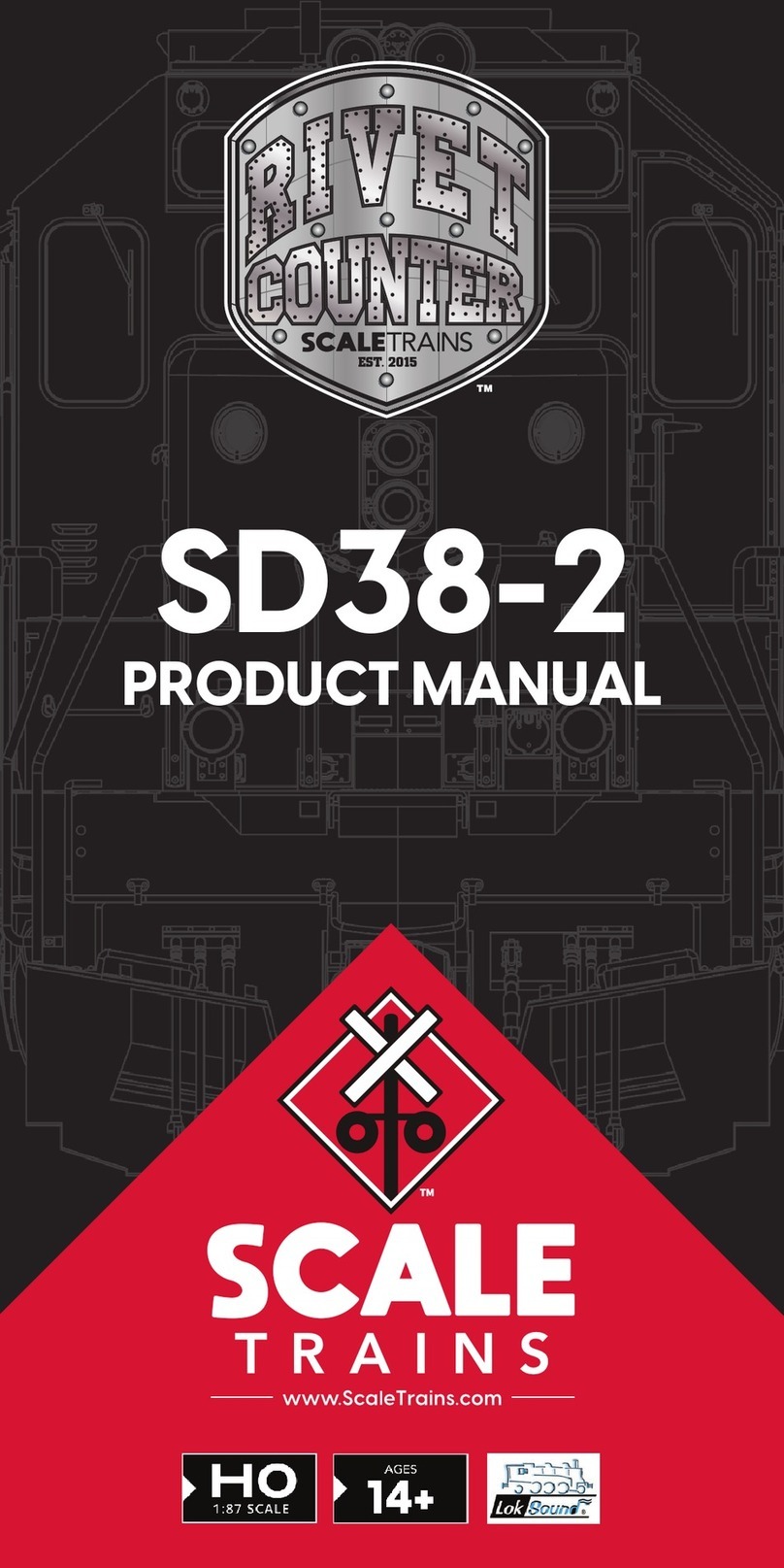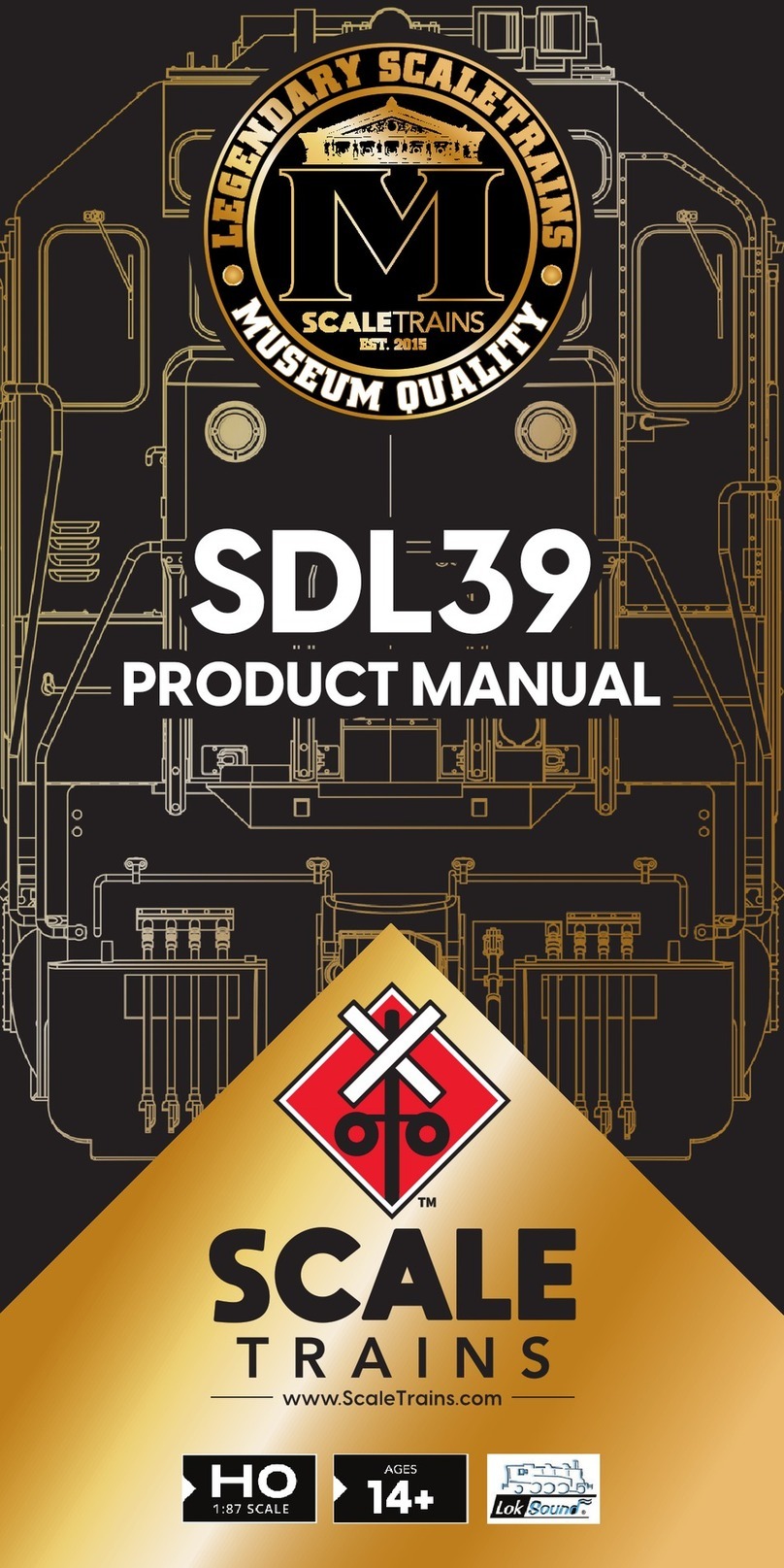
4 5
LUBRICATION
Your ScaleTrains locomotive represents hours of careful research and design
work, and we are proud to present it to you. With the right care, it should provide
years and years of model railroading enjoyment. Out of the box, the model
should be ready for service and no lubrication should be necessary, as it has
been carefully lubricated at the factory for optimum performance. If the need to
lubricate should arise, please follow these guidelines:
• Be sure to use a plastic-compatible lubricant! Most household
lubricants, such as “3-in-1” type oils, may damage the slippery
engineering plastic found in the driveline of the model. Wherever
possible, use lubricants designed specically for model railroad
or similar hobby uses, and if in doubt, check the label for any
compatibility warnings.
• Use the right type of lubricant in the right location! For metal-to-metal
bearing surfaces, the use of light or medium oils is recommended.
For plastic-to-plastic applications, such as gears, light greases are
recommended.
• Always use lubricant sparingly! As the saying goes, a little goes a long
way. When applying lubricant to bearing surfaces, a tiny drop or dab
applied with a ne point, such as a tooth pick, should be more than
sufcient. Any excess lubricant oozing from a bearing surface should
be carefully wiped away with a paper towel. Excess lubricant that
migrates onto electrical pickups can impede power and DCC signal
pickup, leading to erratic operation.
Lubrication points will be the same as would be expected in most any model
locomotive. On the locomotive power trucks, the bearing is behind the wheel
so a small drop of light plastic compatible oil can be used behind each wheel
as necessary.
The interior of the model is lled with circuit boards and wiring for the many
features of your locomotive. Because of this, great care must be taken when
applying lubrication to areas that may require it inside the locomotive. Refer
to the disassembly instructions and exploded diagrams to understand how
to remove the body to access the inner workings of the locomotive. This
information may be included with the model or available on our website.
To lubricate the locomotive, there are two main areas that require attention.
The rst is the motor bearings, which can be found between the motor ends
and brass ywheels on the motor shaft. For this area, a small drop of oil is all
that’s needed. The second area is the worm shafts on top of the gearboxes.
These also require a small drop of oil at both ends of the shaft. One end is
where the driveshafts are attached to the metal worm shaft, while the other
end is where the shaft slightly protrudes out of the outermost bearing.
To apply grease to the gearbox, you’ll need to remove the worm cover
and then remove the worm and shaft. Once these are out of the way, you
can apply a small amount of grease to the top gearbox gear that contacts
the worm gear. After applying the grease, you can re-install the worm and
worm cover. As the locomotive runs, the grease will be distributed inside the
gearbox and coat all the gears.
Whenever possible, avoid contact of the lubricant to the model’s exterior
nish. Oils and greases can harm the factory paint and lettering. Any excess
that may make contact should be gently wiped away with a paper towel or
other ne cloth.
Due to the delicate nature of the interior components inside the locomotives,
if there is any concern, it may be best to contact your local dealer or contact
us directly to help guide you through the lubrication process. Our support
team is available by email at: Support@ScaleTrains.com.
